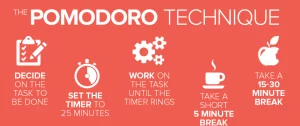Time management skills are very crucial in our today’s world. We are constantly being hampered by tools, notifications, emails, social media, and more. In a world full of distractions, chaos is taken for granted.
It’s almost impossible to know if you’re focusing on what really matters or prioritizing the right task at the right time. Even if you make a plan, it becomes useless when you get high-priority tasks, urgent messages, and endless notifications that day. To keep up with the pace of work, 80% of knowledge workers say they work with their inbox or other communication apps open. As a result, they become less efficient and easily miss messages, tasks, and deadlines.
Time management templates will help you regain your time and focus fully on your daily tasks. Instead of spending time on a to-do list, you can use a time management strategy to prioritize your daily tasks as intended and focus on the tasks that are most relevant to you.
There isn’t just one right way to manage your time. This article presents 18 tips, strategies, and immediate results to help you manage your work and regain your time.
What Is Time Management?
Time management is managing your work so that you can use your time as intended as possible. Time management can increase productivity, but the great thing about effective time management is that you can prioritize your day well so you have time to relax and take care of yourself.
Benefits Of Time Management
Table of Contents
A good time management strategy can help you organize and prioritize your tasks so that you :
• Almost Feel Like The Day Is Getting Longer.
Being conscious of where your time is being spent can help you cut down on unnecessary tasks, de-prioritize tasks that don’t need to be completed today, and get them done in less time. It doesn’t literally mean more hours per day, but you can get more done in the same amount of time.
• Distinguish Between Work And Personal Time.
Improving time management isn’t about squeezing a second in your company to increase productivity. Rather, a time management strategy will help you get the most important tasks done and figure out what can be done tomorrow. You can separate work and personal time by prioritizing today’s tasks and making it clear which tasks can be put off for later.
• Reduce Stress.

If you don’t manage your time effectively, your company can always feel like you’re running out of time. You may feel like you’re in a rush to put out a quickfire by running around. This increases stress and can eventually lead to burnout.
• Increase Productivity.
Here are a number of time management tips to help reduce procrastination and increase productivity. Knowing your day’s key priorities will not only increase your productivity but will also give you confidence that you’re doing the right thing every day.
• You Will Break Bad Habits.

No one wants to procrastinate. But over time, bad habits can build up and affect important work (don’t worry, we’ve experienced it too). Time management strategies can help you identify and break bad habits like procrastination.
Struggling with procrastination already?, If you want to get out of that loop, check how here!
6 Time Management Tips(Strategies) to Increase Productivity
One of the easiest ways to master time management skills is to apply proven time management strategies to your daily life. A time management strategy helps you limit your working hours, handle only one task at a time, and plan your day as intended.
1. Timeboxing

Timeboxing is a goal-oriented time management strategy that completes tasks within a “timebox”. This strategy is especially useful if you don’t know how much time you are devoting to each task and want to be more careful with your to-do list.
Timeboxing allows you to break large tasks into smaller tasks and complete each task in a reasonable amount of time. Each task must have a unique timebox of no more than 3 hours. For example, if you need to write a blog post, you can create a two-hour timebox for your outline. Then, after taking a break, you can create another 3-hour timebox to write your first draft. Breaking your task down into smaller tasks can keep you moving toward your goal for days or weeks.
2. Time Blocking
Time blocking is similar to a timebox, but instead of setting a specific time for each task, you block a period of time in your calendar for a related task. Scheduling your work using time-blocking is a great way to effectively divide your week’s work schedule into individual time slots where you can work on a project, communicate with co-workers, relax, or exercise. Time-blocking allows you to focus without being disturbed, so you can spend more time on your deep work.
To create time blocks, first, figure out your daily or weekly priorities. Then, group similar tasks together so that they can be performed in the one-time block. Finally, you can set up a time block schedule of immersive hours in your calendar and work on it accordingly.
3. The Pomodoro Technique

Similar to timeboxing and time blocking, the Pomodoro technique is a way to get work done in a short amount of time and take breaks between work sessions. The Pomodoro time management strategy is also good for your brain, especially since it encourages you to take regular breaks, eliciting intrinsic motivation. In fact, studies have shown that people become more creative when they take a break.
To use the Pomodoro technique, you need a timer, a prioritized to-do list, and a “snooze” feature for your reminders. Set the timer to 25 minutes and focus on one task during that time without checking for possible text messages or social media. Then, when the time is up, take a five-minute break. The best way is to do something that moves your body, such as snacking during breaks or waking up and stretching. But it’s also fine to check your device or make sure you’ve got an important message while you’re concentrating on your work.
Repeat the process 4 times, working for 25 minutes and resting for 5 minutes. Then, take a long break of 20-30 minutes after your fourth work session.
4. Eat the Frog
Mark Twain famously said, “If your job is to eat frogs, it’s the first thing you do when you wake up.” The frog-eating time management strategy is inspired by this saying and encourages you to tackle the most important and complex tasks first and then the less important or less urgent tasks. This strategy is especially useful when you divide your day into routine tasks and high-priority tasks.
The Frog Eating method allows you to do your most important job every day. Implementing this time management strategy requires tracking tasks and priorities in one centralized tool. Find out how to connect your day-to-day work with your company goals. This will make it easier for you to figure out which tasks you need to prioritize each day and complete those tasks first. Then, once you’ve done the important tasks for the day, you can do the rest.
5. Pareto principle

If eating frogs first in the morning doesn’t appeal to your appetite, you may prefer a Pareto time management strategy. The Pareto Principle is a strategy where you feel more fulfilled and motivated at the start of the day by dealing with tasks that end quickly first, as opposed to eating the frog.
The Pareto Principle often referred to as the “80/20 rule,” has one basic rule. That is, you do 80% of your work 20% of the time. If you can do 80% of your work relatively quickly, you can spend the remaining 20% of your time doing 80% of your work.
6. Getting Things Done (GTD) Method
The Getting Things Done method was devised by David Allen in the early 2000s. According to Allen, the first step to getting things done is to write down all the to-dos. Without relying on your brain, task management tools allow you to focus on getting the job done instead of trying to figure out what needs to be done.
If you want to use the GTD approach, put all your upcoming tasks in one place. After you’ve written all your to-dos, sort and prioritize them. For example, we classify tasks that we no longer need to do (moved to “trash”), tasks that we need to do some time but don’t need to do now (moved to projects or folders “later”), tasks that depend on other tasks, etc. . The tool should know every detail, and it’s up to you to act on it.
Final Thought
No time management tip or strategy in the world can help manage your time effectively if you lack disciple. It’s a distracting world out there and almost everything seeks your attention, it’s now left for you to be laser-focused on this that matters and takes you forward in life. You will be surprised how a five-minute peek at Tiktok can turn into hours! Strive to be disciplined, it’s usually hard at first but eventually turns into a habit.
Cheers and success are yours!





